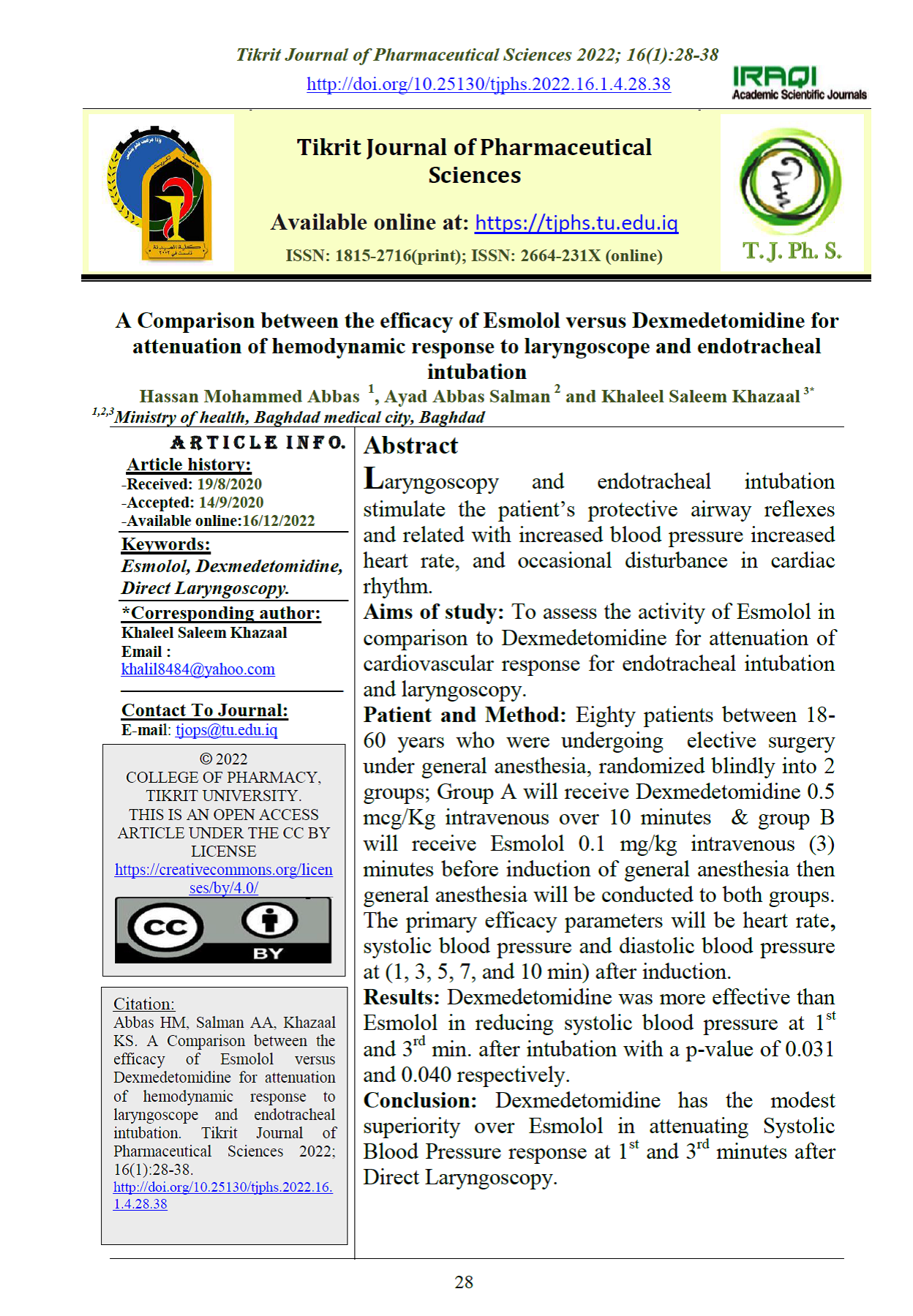A Comparison between the efficacy of Esmolol versus Dexmedetomidine for attenuation of hemodynamic response to laryngoscope and endotracheal intubation
DOI:
https://doi.org/10.25130/tjphs.2022.16.1.4.28.38Keywords:
Esmolol, Dexmedetomidine, Direct LaryngoscopyAbstract
Laryngoscopy and endotracheal intubation stimulate the patient’s protective airway reflexes and related with increased blood pressure increased heart rate, and occasional disturbance in cardiac rhythm.
Aims of study: To assess the activity of Esmolol in comparison to Dexmedetomidine for attenuation of cardiovascular response for endotracheal intubation and laryngoscopy.
Patient and Method: Eighty patients between 18-60 years who were undergoing elective surgery under general anesthesia, randomized blindly into 2 groups; Group A will receive Dexmedetomidine 0.5 mcg/Kg intravenous over 10 minutes & group B will receive Esmolol 0.1 mg/kg intravenous (3) minutes before induction of general anesthesia then general anesthesia will be conducted to both groups. The primary efficacy parameters will be heart rate, systolic blood pressure and diastolic blood pressure at (1, 3, 5, 7, and 10 min) after induction.
Results: Dexmedetomidine was more effective than Esmolol in reducing systolic blood pressure at 1st and 3rd min. after intubation with a p-value of 0.031 and 0.040 respectively.
Conclusion: Dexmedetomidine has the modest superiority over Esmolol in attenuating Systolic Blood Pressure response at 1st and 3rd minutes after Direct Laryngoscopy.

Downloads
Published
How to Cite
Issue
Section
License
Copyright (c) 2022 Tikrit Journal of Pharmaceutical Sciences

This work is licensed under a Creative Commons Attribution 4.0 International License.
This is an open-access journal, and all journal content is available for readers free of charge immediately upon publication.





